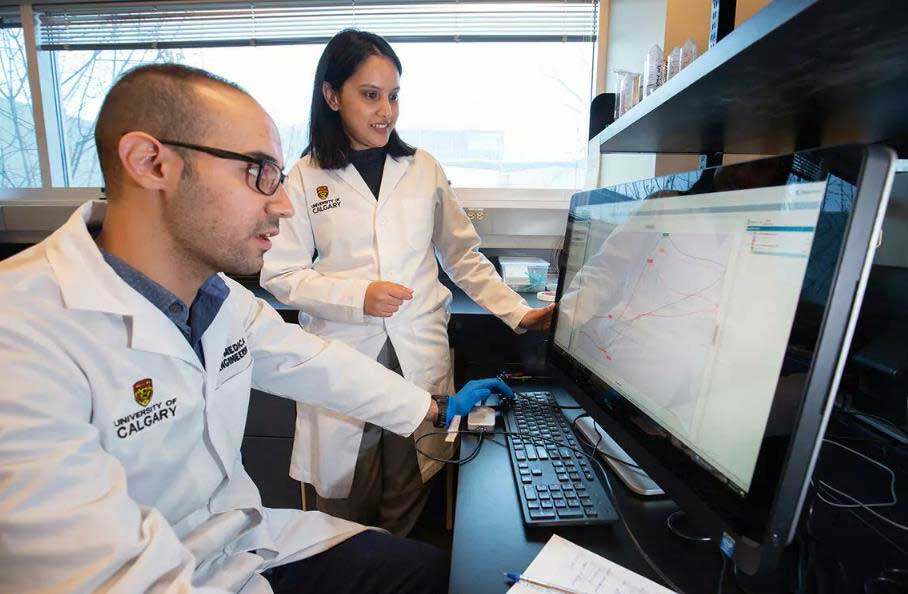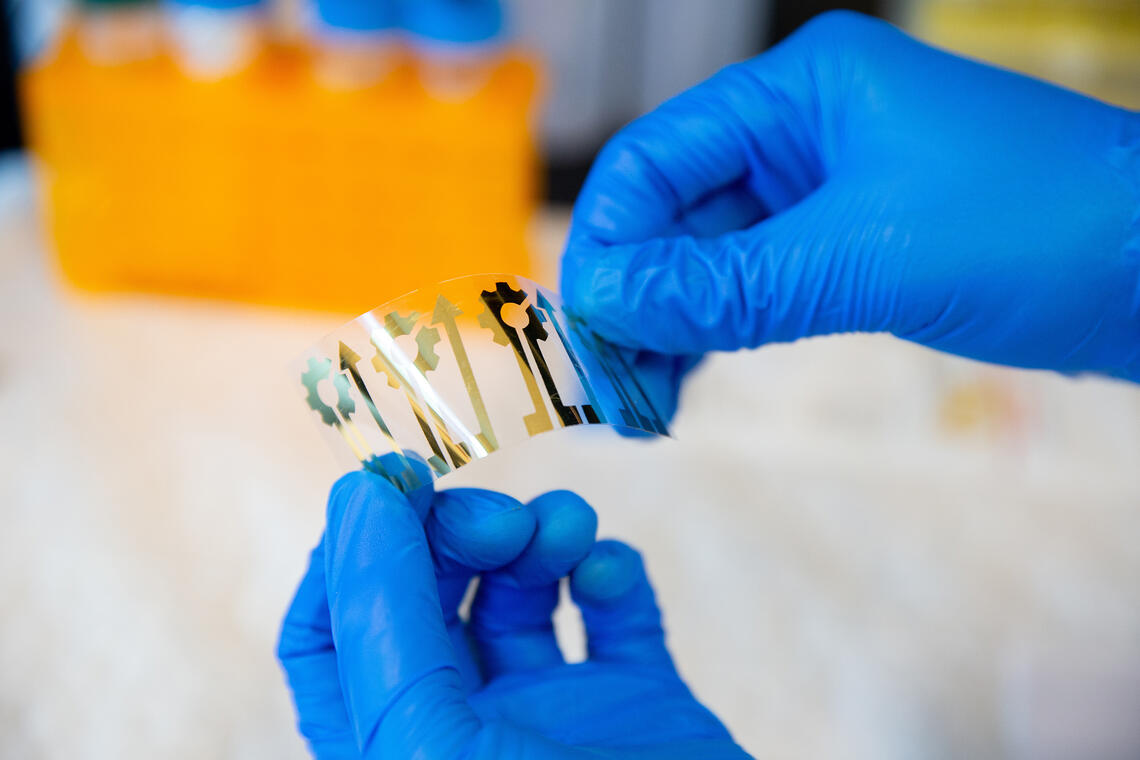

Riley Brandt, University of Calgary
Commercial wearables, such as Fitbits, help track our physical well-being. What these devices lack, however, is comprehensive tracking of molecular biomarkers beyond the detection of vitals. Dr. Richa Pandey, PhD, a biomedical engineering researcher, says there is an opportunity to use wearable detection devices to help doctors and nurses diagnose patients more efficiently.
In her research lab at the University of Calgary, Schulich School of Engineering, Pandey is developing a bioelectronic patch that sticks to the user’s body which can also be incorporated into clothing. Her hope is to develop a biowearable device to monitor the vitals of pregnant women and detect health complications such as perinatal mental health, depression, gestational diabetes, and nutrient deficiency.
“In Canada and worldwide, women, including those living in rural areas, may not always have access to prenatal care providers. The significant impact of poor physical and mental health is reflected in the unsatisfactory quality of life for mothers and the deteriorating emotional and physical well-being of their children and families,” says Pandey. “My hope is to create a tool that addresses these challenges and could be rolled out in health-care settings.”
Currently, commercial wearable technologies only measure five vital signs in the body, and these are body temperature, pulse, respiratory rate, blood pressure, and oxygen levels. Pandey’s lab is trying to add a biomolecular detection capability that could measure lactose, glucose, and cortisol levels.
In addition to analyzing sweat and vitals, the goal is to create a device that looks at how different indicators factor in when a woman’s body undergoes physical or mental stress in their journey of pregnancy.
Pandey says this technology could lead to more equitable and accessible health care: “The wearable device would let nurses and doctors remotely monitor what’s happening to the user. This shrinks the time and effort to get bodily samples, have them analyzed, and await results. The technology will positively affect users in rural communities where access is minimal.”


Riley Brandt, University of Calgary
Partnership and impact
As next steps, Pandey and her research team in the biomedical engineering department are working with the Faculty of Nursing to initiate outreach with the community to understand what kind of devices women are comfortable wearing.
“With our initial talks with the stakeholders and our own experiences, we know that watches are very popular but at the same time it’s not something everyone is comfortable wearing. And from the design and measurement perspective, as well, the wrist is not the most ideal place for measuring many of the health biomarkers,” says Pandey.
“Now we are trying to understand if, for example, a removable textile patch — which fits with a piece of clothing women are comfortable wearing on their upper body — would be a more feasible approach.”
The team is also collaborating with Innovate Calgary to connect her research to industry partners for production.
Pandey attests that this technology could have a big impact: “We are trying all the frugal innovation and purpose-based engineering approaches to make it as cost-effective as possible — so it can reach everybody. This is our core vision.”
This work is funded by the Natural Sciences and Engineering Research Council of Canada (NSERC) and the New Frontiers in Research Fund Exploration (NFRF-E).






































